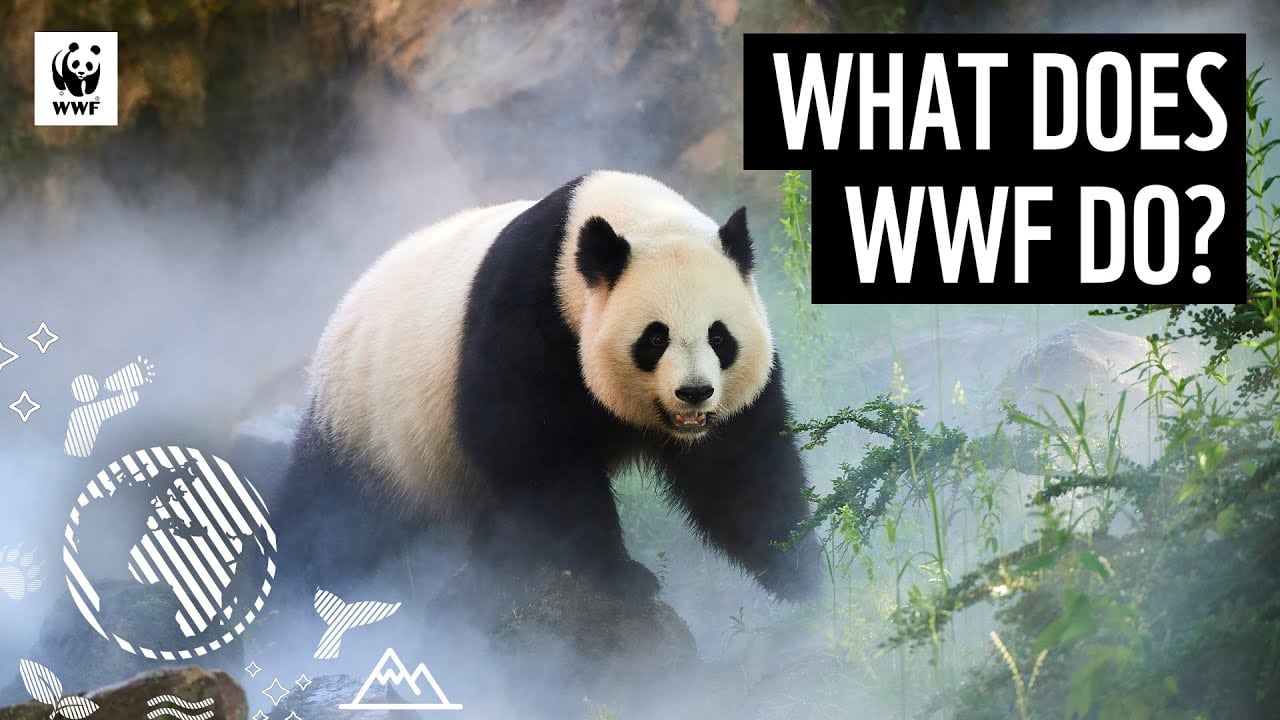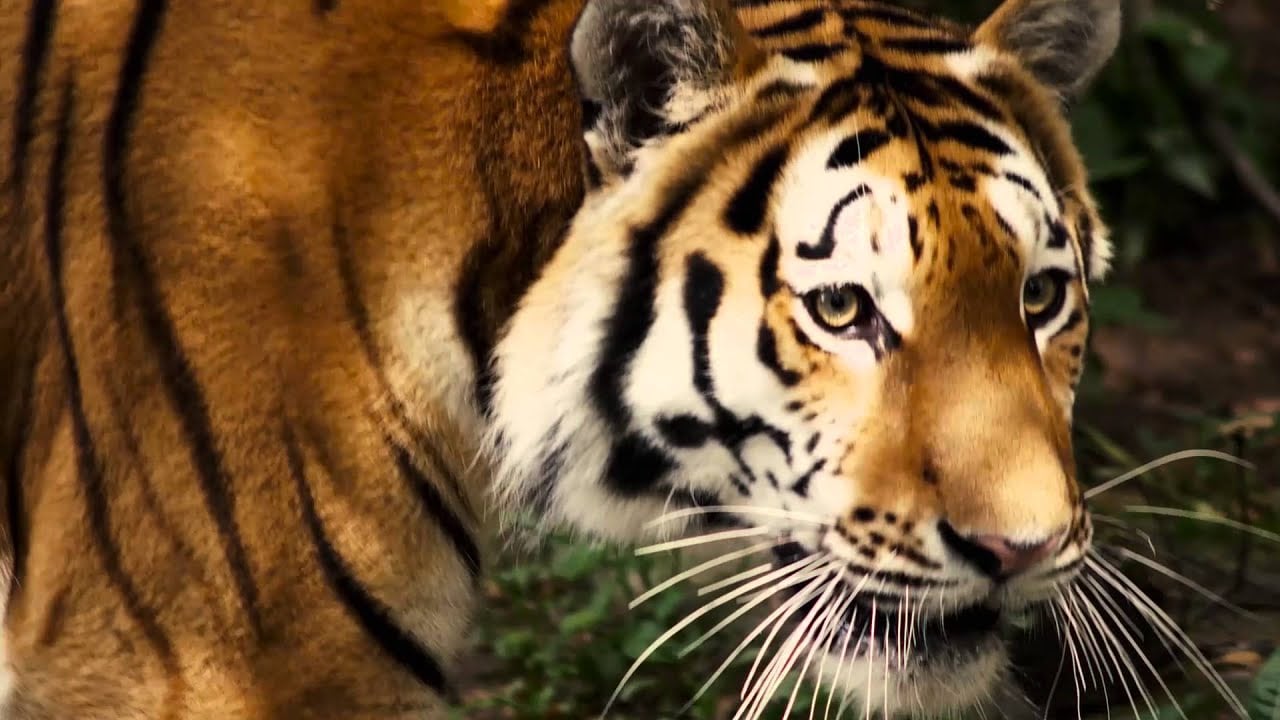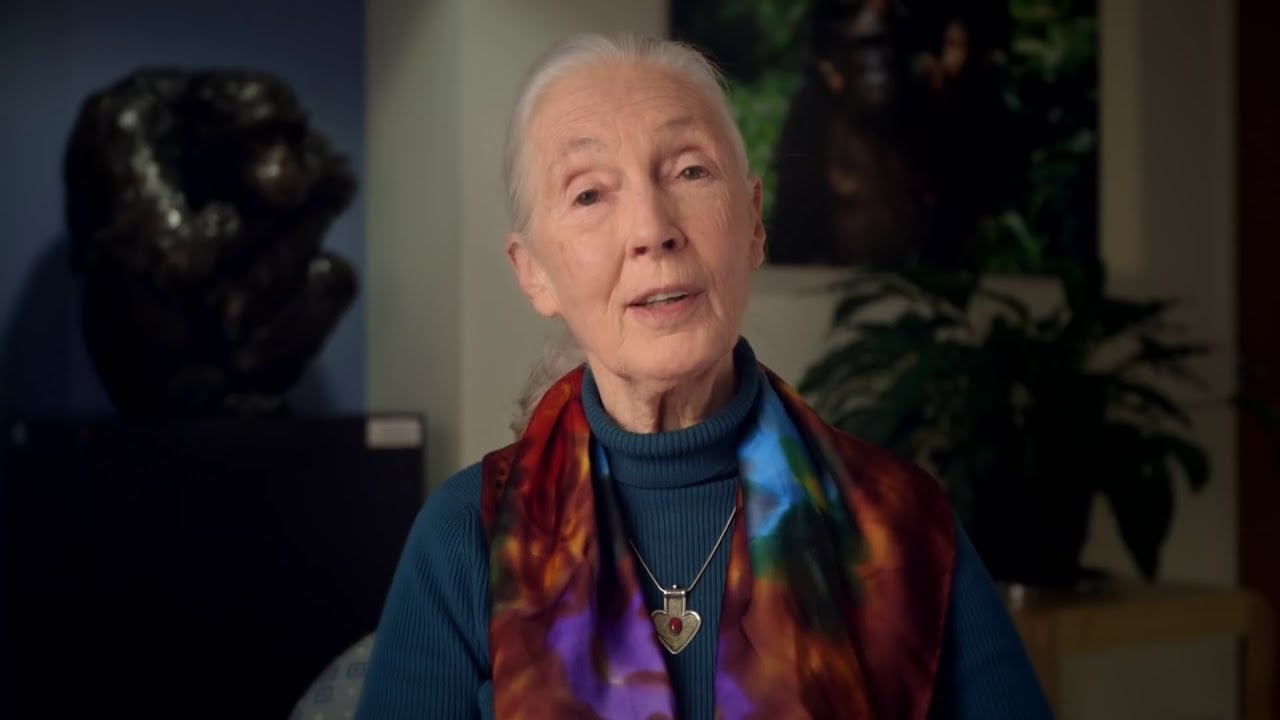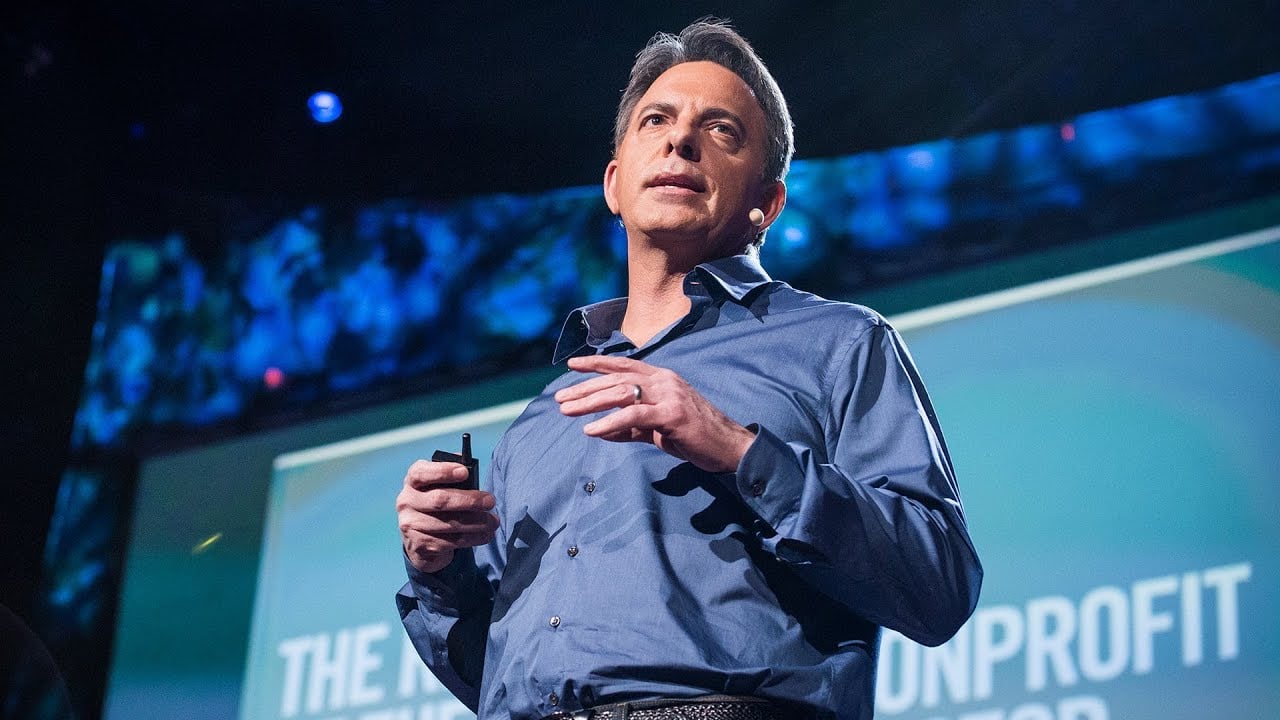12 Best Charities That Protect Wild Animals (Complete 2025 List)
Affiliate Disclosure
Hey fellow impactful ninja ?
You may have noticed that Impactful Ninja is all about providing helpful information to make a positive impact on the world and society. And that we love to link back to where we found all the information for each of our posts.
Most of these links are informational-based for you to check out their primary sources with one click.
But some of these links are so-called "affiliate links" to products that we recommend.
Why do we add these product links?
First and foremost, because we believe that they add value to you. For example, when we wrote a post about the environmental impact of long showers, we came across an EPA recommendation to use WaterSense showerheads. So we linked to where you can find them. Or, for many of our posts, we also link to our favorite books on that topic so that you can get a much more holistic overview than one single blog post could provide.
And when there is an affiliate program for these products, we sign up for it. For example, as Amazon Associates, we earn from qualifying purchases.
What do these affiliate links mean for you?
First, and most importantly, we still only recommend products that we believe add value for you.
When you buy something through one of our affiliate links, we may earn a small commission - but at no additional costs to you.
And when you buy something through a link that is not an affiliate link, we won’t receive any commission but we’ll still be happy to have helped you.
What do these affiliate links mean for us?
When we find products that we believe add value to you and the seller has an affiliate program, we sign up for it.
When you buy something through one of our affiliate links, we may earn a small commission (at no extra costs to you).
And at this point in time, all money is reinvested in sharing the most helpful content with you. This includes all operating costs for running this site and the content creation itself.
What does this mean for me personally?
You may have noticed by the way Impactful Ninja is operated that money is not the driving factor behind it. It is a passion project of mine and I love to share helpful information with you to make a positive impact on the world and society. However, it's a project in that I invest a lot of time and also quite some money.
Eventually, my dream is to one day turn this passion project into my full-time job and provide even more helpful information. But that's still a long time to go.
Stay impactful,
Wildlife habitat across the globe is disappearing at a rate of 5,760 acres every day. As a result, just 4% of the mammals living in the world are wild animals. And ocean wildlife is faring no better, with just 4% of our oceans being protected and millions of marine animals dying every year from plastic pollution. Fortunately, charities around the world are working tirelessly to save wild animals from the threat of extinction. So, we had to ask: What are the best charities that protect wild animals?
The best charities that protect wild animals are the IUCN and Re:wild. Charities such as Panthera, Birdlife International, and the Jane Goodall Institute also focus their efforts on protecting declining populations of specific wild animal species and their habitats.
Whether you want to end the harmful wildlife poaching trade, restore vital wild habitats, or simply prevent the extinction of some of the world’s iconic wild species, there is a charity for you. Keep reading to learn more about what the best charities that protect wild animals are all about, how they work, and what your best way would be to make a contribution.
Here’s What All the Best Charities That Protect Wild Animals Have in Common
The charities on this list were chosen based on their mission, impact and transparency ratings, and achievements.
They operate all over the world, from North America to Africa, protecting the world’s most vulnerable wild animals.
Many of the charities on this list focus their efforts on conserving wilderness areas to help wild animals thrive. Other charities work to intercept poaching efforts and advocate for better wildlife protection.
Yet, they all share the same goal of protecting wild animals.
These Are the 12 Best Charities That Protect Wild Animals in 2025
Below are our favorite charities that protect wild animals (you can click on their link to directly jump to their section in this article):
Best Charities That Protect Wild Animals
(At the end of this article we’ll also share our six-step approach on how you can select the best charity to support.)
IUCN: Enabling Society, Economics, and Nature to Thrive Together

🔎
Their transparency & ratings:
According to their financial report, the IUCN spent 51% of their expenditure on operating costs and 35.2% on education and support.
“Generating, utilizing, and publishing sound, evidence-based research to advance nature conservation and sustainable development.”
IUCN
⚒️
What they do:
The IUCN provides science-based knowledge, tools, and support to animal welfare and conservation organizations, as well as government agencies to protect wild animals. For example, their IUCN Red List is a globally recognized tool to determine the health of the world’s biodiversity. In addition, their Contributions for Nature Platform allows IUCN members to document where their conservation projects are being conducted, creating a database to identify areas in need of support.
🚀
What they’ve achieved:
Today, the IUCN works across 600 sites in 60 countries to improve the conservation of wild animals. For example, they have pledged to actively protect and restore more than 210 million acres of natural land and have assessed 157,190 species through their IUCN Red List. The charity has also been integral to the creation of numerous international conventions including the Convention on International Trade in Endangered Species (CITES) and the Convention on Biological Diversity.
✨
Ways to contribute:
You can donate directly to the IUCN through their website. You can also support the charity by becoming an IUCN Member or by joining an IUCN Commission.
Re:wild: Protecting and Restoring the Wild

🔎
Their transparency & ratings:
Re:wild holds a 4-star rating from Charity Navigator and a Gold Seal of Transparency from GuideStar.
“To protect and restore the wild to build a thriving Earth where all life flourishes.”
Re:wild
⚒️
What they do:
Re:wild protects and restores populations of wild animals through collaborations with governments, like-minded organizations, and local communities. They particularly focus on restoring land in the world’s Key Biodiversity Areas, which are essential for the survival of numerous endangered species and ecosystems. They also work with Earth Guardians on the ground, including park rangers, to tackle wildlife crime and habitat destruction. For example, they are working with the Maya Forest Corridor Coalition to identify and conserve vulnerable forest areas in the Maya Mountains to protect endangered jaguars and Baird’s tapirs.
🚀
What they’ve achieved:
Since their founding, Re:wild has protected and conserved over 460 million acres of land that has benefited more than 33,000 wild species, including over 200 severely threatened species. They have also created more than 100 new conservation areas, covering 90 million acres, through their collaborations with 500 conservation partners in over 80 countries. Today, the charity actively focuses on the protection of 193 endangered species across 24 wildlife programs.
✨
Ways to contribute:
You can donate directly to Re:wild through their website. You can also support the charity by attending one of their awareness events or Re:wilding your life.
World Wildlife Fund: Taking Action for Our World

🔎
Their transparency & ratings:
The World Wildlife Fund holds a 4-star rating from Charity Navigator and the Platinum Seal of Transparency from GuideStar.
“To create a world where people and wildlife can thrive together.”
World Wildlife Fund
⚒️
What they do:
The World Wildlife Fund conserves the world’s most endangered and iconic wild species by collaborating with like-minded organizations, working with local communities, and campaigning to end wildlife markets. For example, they are working to prevent further deforestation of the Amazon Rainforest by developing forest certification methods, such as the Forest Stewardship Council, to ensure timber and paper pulp is harvested sustainably. They are also creating green corridors in China to link isolated giant panda populations and support anti-poaching efforts to protect the Amur leopard.
🚀
What they’ve achieved:
Since their founding, the World Wildlife Fund has grown into one of the largest and most respected conservation organizations in the world. The charity now works across more than 100 countries to protect wild animals and their habitats. For example, since 1979, they have built 67 giant panda reserves, covering around 1.4 million hectares. Furthermore, in 2018, the WWF successfully campaigned for the expansion of the Chiribiquete National Park in the Colombian Amazon to 4.3 million hectares. This is now the world’s largest area of protected rainforest, home to 3,000 species of wild animals and plants.
✨
Ways to contribute:
You can donate directly to the World Wildlife Fund through their website. You can also support the charity by symbolically adopting an animal or purchasing items from their online shop.
Akashinga: End Poaching in Africa

🔎
Their transparency & ratings:
Akashinga has a 3-star rating from Charity Navigator and a Gold Seal of Transparency from GuideStar.
“Creating resilient ecosystems where nature, wildlife, and communities will thrive together for years to come.”
Akashinga
⚒️
What they do:
Akashinga works to end the poaching of wild animals in Africa by training individuals in local communities to become wildlife rangers. For example, their Akashinga team is the first all-women anti-poaching team arresting poachers with minimal conflict. In addition, through their LEAD Ranger program, the charity delivers tailored training, mentoring, and long-term support to develop Wildlife Crime-Enforcement Leaders. Through these initiatives, they also create vital education and employment opportunities for communities in rural Africa.
🚀
What they’ve achieved:
Since their founding, Akashinga has actively protected over 9.1 million acres of land to protect wild animals through more than 50 conservation initiatives. As a result, Africa has seen an 80% reduction in poaching and a 399% increase in wildlife. For example, in 2021, the Akashinga patrol unit made 351 arrests in 208 separate operations for 151 wildlife offenses. They had an overall conviction rate of 84.5% between 2018 and 2021. Moreover, the charity has trained over 200 instructors from 5 countries, which have shared their practices with an additional 5,000 rangers. This resulted in the protection of 14 million acres of wilderness.
✨
Ways to contribute:
You can donate directly to Akashinga through their website. You can also support the charity by fundraising or becoming a Guardian.
Fauna & Flora International: Saving Nature Together

🔎
Their transparency & ratings:
Fauna & Flora International holds a 4-star rating from Charity Navigator and a Platinum Seal of Transparency from GuideStar.
“To conserve threatened species and ecosystems worldwide.”
Fauna & Flora International
⚒️
What they do:
Fauna & Flora International tackles species and habitat decline, as well as threats to wild animals including poaching and the bushmeat trade. They do this through advocacy, anti-poaching efforts, and by working alongside local communities. For example, in the Pu Mat National Park, Vietnam, they provide technical support and scientific monitoring tools to rangers. They have also launched their innovative situational crime prevention toolkit to address the illegal wildlife trade. Furthermore, the charity is supporting the building of vital wildlife corridors across Kenya, Sudan, and Mozambique to protect the endangered African wild dog.
🚀
What they’ve achieved:
Today, Fauna & Flora International actively conserves 50 million hectares of wildlife habitat across 48 countries worldwide to protect wild animals. To date, they have saved more than 1 million tonnes of carbon from being released into the atmosphere across 94 terrestrial and marine protected sites. For example, in 2022 alone, the charity worked with 109 endangered wild species, benefiting a further 193 species. In the same year, they protected and released 14,000 turtle hatchlings and conducted 43 projects to better understand and end the illegal wildlife trade.
✨
Ways to contribute:
You can donate directly to Fauna & Flora International through their website. You can also support the charity by purchasing items from their online shop.
Oceana: Restoring the World’s Oceans

🔎
Their transparency & ratings:
Oceana holds a 4-star rating from Charity Navigator and the Gold Seal of Transparency from GuideStar.
“Dedicated to protecting and restoring the world’s oceans on a global scale.”
Oceana
⚒️
What they do:
Oceana works to tackle the numerous threats that affect marine wildlife, including habitat loss, overfishing, and the illegal killing of threatened species. They do this by advocating for changes to marine-related government policies. For example, they run campaigns to reduce whale and sea turtle entanglement in commercial fishing gear and work with local fisheries to formulate effective mitigation programs. They also focus on reducing pollution in our oceans by campaigning for businesses to use alternatives to single-use plastics.
🚀
What they’ve achieved:
To date, Oceana has protected nearly 4 million square miles of ocean across Europe and 9 additional coastal countries. They have also won over 300 policy victories for marine wildlife. For example, in 2022, the charity successfully campaigned for a 16,000sq mile increase in vulnerable orca habitats across the coasts of Oregon, Washington, and Northern California. Moreover, in 2023, following campaigns by Oceana, the National Marine Fisheries Service authorized the commercial use of innovative fishing gear that will protect turtles, whales, and dolphins from entanglements across the US West Coast.
✨
Ways to contribute:
You can donate directly to Oceana through their website. You can also support the charity by signing one or more of their petitions or purchasing items from their online store.
Wildlife Conservation Society: We Stand for Wildlife

🔎
Their transparency & ratings:
The Wildlife Conservation Society holds a 4-star rating from Charity Navigator and the Silver Seal of Transparency from GuideStar.
“Saving wildlife and wild places worldwide through science, conservation action, education, and inspiring people to value nature.”
Wildlife Conservation Society
⚒️
What they do:
The Wildlife Conservation Society utilizes the knowledge of their scientists, consisting of 170 PhDs and DVMs, to improve conservation efforts for a range of threatened wild species worldwide. They do this by working with local governments to increase the size of national parks and protected wilderness areas, as well as working to prevent poaching through the use of SMART conservation tools. They focus their efforts on protecting the most endangered wide-ranging species including elephants, sharks, turtles, and big cats.
🚀
What they’ve achieved:
Today, the Wildlife Conservation Society actively protects wildlife and wild places in over 70 countries, as well as across the oceans, to conserve wild species. For example, through their Climate Adaptation Fund, the charity has donated $21.9 million to support wildlife adaptation in the US in response to global warming. The charity has also helped nations and communities to build and manage 245 national wildlife reserves, including Afghanistan’s first 2 protected areas; Band e-Amir and Wakhan National Parks.
✨
Ways to contribute:
You can donate directly to the Wildlife Conservation Society through their website. You can also support the charity by symbolically adopting an animal or signing one of their numerous petitions to support wildlife conservation initiatives.
Galápagos Conservancy: Conserving One of the World’s Great Ecological Wonders

🔎
Their transparency & ratings:
Galápagos Conservancy holds a 4-star rating from Charity Navigator and a Gold Seal of Transparency from GuideStar.
“As a leader in direct on-the-ground conservation action, we work with partners to save imperiled species, build a more sustainable society, and rewild the complex ecosystems of the Archipelago”
Galápagos Conservancy
⚒️
What they do:
Galápagos Conservancy protects the wild animal species of the diverse Galápagos Islands through restoration and species conservation. For example, they conduct cutting-edge research in the Galápagos Marine Reserve to better understand native species and their habitats. With this information, they then advocate against illegal fishing practices and formulate management plans to ensure these species survive. They also offer conservation grants to like-minded organizations to support targeted research projects that protect vulnerable Galápagos species, like the endangered pink iguana.
🚀
What they’ve achieved:
Since their founding, Galápagos Conservancy has remained dedicated to protecting the unique wild species only found on the Galápagos Islands. For example, since 1998, they have actively protected 76,448sq miles of the Galápagos Marine Reserve, which is home to over 3,000 species. And in 2022, the charity rehabilitated and cared for 2,389 tortoises at their breeding centers and supported 135 conservation projects across the islands. In the same year, they trained 430 teachers and taught 7,300 students in conservation.
✨
Ways to contribute:
You can donate directly to Galápagos Conservancy through their website. You can also support the charity by making a gift in honor or symbolically adopting a giant tortoise.
Defenders of Wildlife: Saving North America’s Wildlife
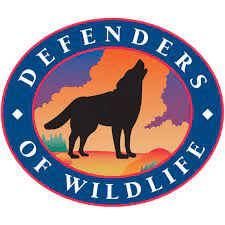
🔎
Their transparency & ratings:
Defenders of Wildlife holds a 4-star rating from Charity Navigator and the Platinum Seal of Transparency from GuideStar.
“Dedicated to the protection of all native animals and plants in their natural communities.”
Defenders of Wildlife
⚒️
What they do:
Defenders of Wildlife works on the ground and with government organizations to protect and preserve North America’s wild places and the wild animals that reside in them. They do this by developing recovery plans for threatened wild animals, and by assisting in the creation of wildlife corridors to mitigate human-wildlife conflict. Furthermore, the charity is working with natural resource managers and planners to implement strategies and adaptive conservation plans to help imperiled species cope with environmental changes caused by climate change.
🚀
What they’ve achieved:
Since their founding, Defenders of Wildlife has been at the forefront of wildlife conservation in North America, protecting vulnerable wild animals. For example, they have developed over 100 collaborative projects to prevent human-wildlife conflicts with grizzly bears and wolves, which have directly impacted population levels. Furthermore, in 2021, the charity successfully advocated for a 640% expansion of endangered orca habitat across the coasts of Washington, Oregon, and California. In the same year, they transferred 56 endangered Yellowstone bison to tribal lands in Oklahoma and Washington, saving them from slaughter.
✨
Ways to contribute:
You can donate directly to Defenders of Wildlife through their website. You can also support the charity by honoring someone special or shopping to defend.
Panthera: Protecting All Big Cats

🔎
Their transparency & ratings:
Panthera holds a 4-star rating from Charity Navigator and a Platinum Seal of Transparency from GuideStar.
“Ensure a future for wild cats and the vast landscapes on which they depend.”
Panthera
⚒️
What they do:
Panthera partners with like-minded organizations, scientific institutions, and local communities to implement protective strategies for wild cat species through their various conservation projects. Their main focus is on the seven species of big cats; pumas, lions, tigers, leopards, jaguars, snow leopards, and cheetahs. For example, through their Tigers Forever Project, the charity monitors tiger populations across 5 countries and supports counter-poaching efforts to secure protected habitats and corridors. Furthermore, they have partnered with the African Congregational Church to replace the use of leopard skin hats in ceremonial regalia.
🚀
What they’ve achieved:
Since their founding, Panthera has partnered with over 45 government agencies, including 7 counter-wildlife crime information hubs, across more than 35 countries to protect the world’s 40 wild cat species. For example, they have established the creation of 19,000 synthetic fur products, sparing the lives of thousands of servals, lions, and leopards. In addition, they have taught over 2,100 children about the importance of jaguar conservation and installed over 30,000 motion-activated cameras to track the movements of threatened cat species.
✨
Ways to contribute:
You can donate directly to Panthera through their website. You can also support the charity by setting up an online fundraiser or purchasing items from their online shop.
Birdlife International: Protecting Birds and Nature
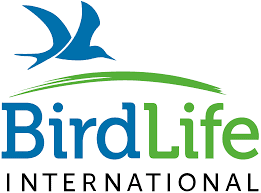
🔎
Their transparency & ratings:
Birdlife International holds a 4-star rating from Charity Navigator.
“To conserve birds, their habitats and global biodiversity, working with people towards sustainability in the use of natural resources.”
Birdlife International
⚒️
What they do:
Birdlife International protects all wild bird species around the world through their network of bird watchers, scientists, and volunteers. For example, through their innovative Data Zone tool, they track endangered bird species and identify vital biodiversity areas to formulate effective conservation management plans. Furthermore, they have developed AVISTEP, an Avian Sensitivity Tool for Energy Planning that can be used to determine where renewable energy could negatively impact bird populations so that plans can be amended accordingly.
🚀
What they’ve achieved:
Today, Birdlife International is a global organization consisting of over 122 national and international partners and 2 million scientists and bird lovers, working together to save all bird species. Since their founding, they have identified and documented over 13,000 key bird biodiversity areas and are now the official scientific source of information on bird species for the IUCN Red List. For example, in 2021, the charity established 595,000 km2 of ocean as a new Marine Protected Area along the North Atlantic Current, which is home to nearly 5 million birds from 21 species. This area is also one of the most important ocean habitats for migratory bird species in the world.
✨
Ways to contribute:
You can donate directly to Birdlife International through their website. You can also support the charity by becoming a Species Champion or fundraising.
Jane Goodall Institute: Conserving the Natural World
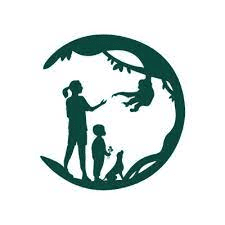
🔎
Their transparency & ratings:
The Jane Goodall Institute holds a 4-star rating from Charity Navigator.
“Everything is connected – everyone can make a difference.”
Jane Goodall Institute
⚒️
What they do:
The Jane Goodall Institute utilizes scientific technologies and research techniques to monitor wild chimpanzee habitats. They also train local communities to use mobile mapping technologies, empowering them to actively protect surrounding forests and all their wild animals. In addition, they rescue wild chimpanzees from crime syndicates and place them in sanctuaries until it is safe to release them back into the wild. Moreover, the charity runs environmental education projects for communities to encourage school children around the world to address local conservation issues through their Roots & Shoots program.
🚀
What they’ve achieved:
Since their founding, the Jane Goodall Institute has rescued and cared for 290 wild chimpanzees and protected 3.4 million acres of wild habitat. They have also engaged local African communities in 130 conservation education programs and trained 179 local people in the use of forest monitoring techniques. Furthermore, their Roots & Shoots program has reached over 5,800 schools in 100 countries around the world.
✨
Ways to contribute:
You can donate directly to the Jane Goodall Institute through their website. You can also support the charity by becoming a Chimp Guardian or purchasing items from their online shop.
How Can You Select the Best Charities to Support?
The charities on the list are, we deem, the best charities that protect wild animals. However, you may have a particular charity you want to support. Let’s look at what you can do to ensure your contribution has the most significant impact.
- Check out the charity website. Charities that are worthy of your donations are transparent in their mission and their figures. Familiarize yourself with their history, mission, and values. Their website usually is the best place to start.
- Identify the charity’s mission. Without a goal, the charity is likely to fail. If the charity’s mission isn’t clear, it’s probably worth looking for a charity that does have a clear mission.
- Check if the charity has measurable goals. An effective charity has clear goals. You want to know your donation will help the charity reach its goals. But if it doesn’t have targets, it’s likely to fail or squander your gift. The charity should be able to account for its spending and supply evidence of the work they do.
- Assess the successes or goals the charity has achieved. You wouldn’t invest in a business if it kept missing its targets. In the same way, charities are like this too. If no one is assessing a charity’s progress in reaching its targets, the chances are they’re not making a substantial positive change.
- Check the charity’s financials and stats. Trustworthy organizations will publish financial statements and reports each year. Some might be exempt from having to do so, but they should be able to provide them to public members who are interested in donating.
- Locate sources who work with or benefit from the charity. Word of mouth and first-hand experience of a charity’s work lets you know the charity’s quality. If you’re able to do so, check out the charity for yourself or speak to someone familiar with it. This way, your donation will go to the right place.
How Can You Best Support These Charities?
After you’ve made your decision, it’s time for you to decide on how you’d like to help the charities you’ve chosen. Check how you can help—each charity runs specific programs that have unique aims. Find out what the aim of such programs is and whether they are right for you.
Here are a few ways you can help your chosen charity:
- Donate money. You can find donation pages on the website of most charities. Your donation can be a one-time payment, or you can set it to be deducted regularly at different intervals. You can mostly pay via credit card, but some charities also take PayPal or Bitcoin payments.
- Buy their official merchandise. Charities can also raise money by selling merchandise. So, you can support them by buying the mugs, shirts, caps, pens, pencils, and any other such items they may be selling. Ideally, you should buy as much as you can to share and spread the word about the charity’s activities.
- Engage in volunteer work. As you’ve seen from our descriptions above, some charities engage in a lot of local and grassroots programs. You can help by taking on and organizing the program in your local area.
- Help their fundraising efforts. You can spread the word about the charity in your workplace, school, church, etc., and hold creative fundraising drives on social media or offline within your small circles.
- Share their stories. Most charities have compelling stories that you can share with your audience to attract more people to the cause.
Final Thoughts
Now it is up to you to select the charity that resonates most with you. And whichever charity you end up choosing and contributing to, we are sure that they will immensely appreciate your support. Hopefully, the information within this article has made this selection process a bit easier for you to support charities dedicated to protecting wild animals—based on the causes that matter most to you.
Stay impactful,

PS: Finally, I want to leave you with a thought-provoking TED talk from Dan Pallotta, a leading philanthropic activist and fundraiser, about what is wrong with the way we think about charities—and what we can do about it:
Sources
- Animal Matters: Facts – Wildlife
- World Wildlife Fund: Oceans
- IUCN: Home page
- IUCN: 75 Years of Experience
- IUCN: 2022 Annual Report
- IUCN: Science-led approach
- IUCN: Red List
- IUCN: Contributions for Nature Platform
- CITES: Home page
- Convention on Biological Diversity: Home page
- IUCN: Donate
- IUCN: Become an IUCN Member
- IUCN: Expert Commissions
- Re:wild: Home page
- Charity Navigator: Re:wild
- GuideStar: Re:wild
- Re:wild: Conservation partners
- Re:wild: Key Biodiversity Areas
- Re:wild: Wildlife
- Re:wild: Wild places
- Re:wild: Guardians
- Re:wild: Maya Forest Corridor
- Re:wild: 2022 Impact Report
- Re:wild: Donate
- Re:wild: Events
- Re:wild: Re:wild your life
- World Wildlife Fund: Home page
- World Wildlife Fund: Our work in action
- Charity Navigator: World Wildlife Fund
- GuideStar: World Wildlife Fund
- World Wildlife Fund: Wildlife Conservation
- World Wildlife Fund: Working With Others
- World Wildlife Fund: Working With Communities
- World Wildlife Fund: Pasto-Mocoa
- World Wildlife Fund: Forest Certification
- Forest Stewardship Council: Home page
- World Wildlife Fund: Giant Panda
- World Wildlife Fund: Amur Leopard
- World Wildlife Fund: About Us
- World Wildlife Fund: 60 Years of Action
- World Wildlife Fund: Donate
- World Wildlife Fund: Adopt an Animal
- World Wildlife Fund: Shop
- Akashinga: Home page
- Charity Navigator: Akashinga
- GuideStar: Akashinga
- Akashinga: Akashinga Rangers
- Akashinga: Lead Ranger
- Akashinga: Our Impact
- Akashinga: Annual Report 2021
- Akashinga: Donate
- Akashinga: Fundraise
- Akashinga: Get Involved
- Fauna & Flora International: Home page
- Charity Navigator: Fauna & Flora International
- GuideStar: Fauna & Flora International
- Fauna & Flora International: Protecting vital habitats
- Fauna & Flora International: Tackling illegal and unsustainable wildlife trade
- Fauna & Flora International: Who we are
- Fauna & Flora International: Forest protection in Pu Mat National Park
- Fauna & Flora International: Using situational crime prevention
- Fauna & Flora International: African Wild Dog
- Fauna & Flora International: Donate
- Fauna & Flora International: Shop
- Oceana: Home page
- Oceana: About Us
- Charity Navigator: Oceana
- GuideStar: Oceana
- Oceana: Protecting Ocean Habitat
- Oceana: Our Campaigns
- Oceana: What Oceana is Doing
- Oceana: Curbing Plastic Pollution at the Source
- Oceana: Victories
- Oceana: Donate
- Oceana: Take Action
- Oceana: Shop
- Wildlife Conservation Society: Home page
- Wildlife Conservation Society: About Us
- Charity Navigator: Wildlife Conservation Society
- GuideStar: Wildlife Conservation Society
- Wildlife Conservation Society: Discover
- Wildlife Conservation Society: SMART
- Wildlife Conservation Society: Wildlife
- Wildlife Conservation Society: Our Work
- Wildlife Conservation Society: Climate Crisis
- Wildlife Conservation Society: Protected Areas
- Wildlife Conservation Society: Donate
- Wildlife Conservation Society: Symbolic Animal Adoption
- Wildlife Conservation Society: Get Involved
- Galápagos Conservancy: Home page
- Galápagos Conservancy: About Us
- Charity Navigator: Galápagos Conservancy
- GuideStar: Galápagos Conservancy
- Galápagos Conservancy: Rewilding Galápagos Projects
- Galápagos Conservancy: Saving Species Projects
- Galápagos Conservancy: Vital Signs
- Galápagos Conservancy: Strengthening Marine Protection
- Galápagos Conservancy: Conservation Action Grants
- Galápagos Conservancy: Saving Pink Iguanas
- Galápagos Conservancy: Impact Report 2022
- Galápagos Conservancy: Donate
- Galápagos Conservancy: Make a gift in honor
- Galápagos Conservancy: Adopt a Giant Tortoise
- Defenders of Wildlife: Home page
- Defenders of Wildlife: About Us
- Charity Navigator: Defenders of Wildlife
- GuideStar: Defenders of Wildlife
- Defenders of Wildlife: Conserving Imperiled Species
- Defenders of Wildlife: Wildlife Corridors and Habitat Connectivity
- Defenders of Wildlife: Combating Climate Change
- Defenders of Wildlife: 10 Ways 2021 Gave Us Hope For Wildlife
- Defenders of Wildlife: Donate
- Defenders of Wildlife: Honor Someone Special
- Defenders of Wildlife: Shop to Defend
- Panthera: Home page
- Panthera: Our Mission
- Charity Navigator: Panthera
- GuideStar: Panthera
- Panthera: Threats and Solutions
- Panthera: Tigers Forever
- Panthera: Furs for Life
- Panthera: Donate
- Panthera: Fundraise
- Panthera: Shop
- Birdlife International: Home page
- Charity Navigator: Birdlife International
- Birdlife International: Who we are
- Birdlife International: Data Zone
- Birdlife International: Important Bird and Biodiversity Areas in Danger 2020
- Birdlife International: AVISTEP
- Birdlife International: 2021 Annual Review
- Birdlife International: Annual Report 2019
- Birdlife International: Donate
- Birdlife International: Species Champion
- Birdlife International: Your Fundraising
- Jane Goodall Institute: Home page
- Charity Navigator: Jane Goodall Institute
- Jane Goodall Institute: Conservation Science
- Jane Goodall Institute: Healthy Habitats
- Jane Goodall Institute: Monitoring Forests
- Jane Goodall Institute: Protecting Chimpanzees & Other Great Apes
- Jane Goodall Institute: Public Awareness & Environmental Education
- Jane Goodall Institute: Roots & Shoots
- Jane Goodall Institute: Our Impact
- Jane Goodall Institute: Donate
- Jane Goodall Institute: Chimp Guardian
- Jane Goodall Institute: Shop


